
Robots are ridiculously cool, but why, exactly? Are humans just narcissists that want to see copies of themselves? Do we want to obliterate the line between human and machine out of raw curiosity? Or are stories about robots really stories about super-powerful humans, and we’re afraid of what someone much stronger or much smarter could do to us?
The answer is probably “yes” to all of these and more reasons, besides.
The word “robot” comes from the Czech word “robota,” meaning obligatory work. It introduced in the play R.U.R. (in the list below) by Karel Čapek in 1920, which makes me realize I have never seen a science fiction play before.
I’m counting artificial intelligences in this list, like 2001‘s HAL, because they evoke the creepy/cool feeling of more ambulatory robots.
2001 was developed concurrently with Stanley Kubrick’s film version and published after the release of the film. Clarke and Kubrick worked on the book together, but eventually only Clarke ended up as the official author.
The robot here is the HAL, the computer aboard the spaceship Discovery One. Since he can control hardware, i.e., the spaceship, you could argue that HAL is a robot, with the whole ship being his body.
HAL and the alien monolith in 2001 are two of the best creations of science fiction, alongside Asimov’s psychohistory and Herbert’s planet Dune.
The wildly popular debut novel from author Meyer, Cinder is a darkly subversive retelling of Cinderella, with Cinder being a cyborg.
This isn’t a book I would usually look twice at, since the cover suggests ‘Twilight with Robots,’ but the reviews are so universally positive that it’s worth a read.
…this futuristic twist on Cinderella retains just enough of the original that readers will enjoy spotting the subtle similarities. But debut author Meyer’s brilliance is in sending the story into an entirely new, utterly thrilling dimension.
–Publishers Weekly (starred review)
Cyborg is about astronaut-turned-test pilot, Steve Austin, who experiences a catastrophic crash during a flight, leaving him with all but one limb destroyed, blind in one eye, and with other major injuries.
You’re probably more familiar with this story from its incarnation on TV: The Six Million Dollar Man.
The first half of the novel details Austin’s operation and both his reaction to his original injuries—he attempts to commit suicide—and his initially resentful reaction to being rebuilt with bionics. The second involves the kind of spy adventure usually associated with Steve Austin.
Daemon and Freedom™ comprise a two-part novel about a distributed, persistent computer application, known as The Daemon, that begins to change the real world after the original programmer’s death. It corrupts, kills, and runs independent of human control. It’s up to Detective Peter Sebeck to wrest the world from the malevolent virtual enemy before its ultimate purpose is realized: to dismantle society and bring about a new world order.
…a perfect gift for a favorite computer geek or anyone who appreciates thrills, chills and cyber suspense.
-Publishers Weekly (starred review)
The film adaptation of this story is, of course, Blade Runner (watch the director’s cut, not the theatrical release).
The main plot follows Rick Deckard, a bounty hunter who is faced with “retiring,” i.e., blowing away, six escaped Nexus-6 brain model androids, the latest and most advanced model, while a secondary plot follows John Isidore, a man of sub-par IQ who aids the fugitive androids. In connection with Deckard’s mission, the novel explores the issue of what it is to be human. Unlike humans, the androids possess no sense of empathy. In essence, Deckard probes the existence of defining qualities that separate humans from androids.
The book is largely about the response of Minds (AIs with enormous intellectual and physical capabilities and distinctive personalities) to the Excession (a mysterious alien artifact) and the way in which a brutal society, tries to use the Excession to increase its power.
Diplomat Byr Genar-Hofoen has been selected by the Culture to undertake a delicate and dangerous mission. The Department of Special Circumstances—the Culture’s espionage and dirty tricks section—has sent him off to investigate a 2,500-year-old mystery: the sudden disappearance of a star fifty times older than the universe itself. But in seeking the secret of the lost sun, Byr risks losing himself.
Winner of the Arthur C. Clarke Award for Best Science Fiction in the UK, He, She and It follows the romance between a human woman and the cyborg created to protect her community from corporate raiders in a post-apocalyptic America.
Author Piercy examines gender roles, human identity, political economy, environmentalism, love, and Jewish mysticism, a combination not often found in SF.
The women in this book are strong, well-realized characters, while the men seem frivolous and cold. But given how decades of SF has treated women, i.e., damsels in distress you have to explain things to, perhaps some table-turning is in order.
Isaac Asimov wanted to call this set of nine short stories Mind and Iron because “I, Robot” was the title of short story written by someone else (Eando Binder, the pseudonym of Earl and Otto Binder). He initially objected when the publisher made the title the same as Binder’s story.
I, Robot explores the relationship between robots and people, and contains some of Asimov’s best writing, including the creation of the Three Laws of Robotics. In 2004, the Saturday Evening Post claimed that the Three Laws “revolutionized the science fiction genre and made robots far more interesting than they ever had been before.”
Ilium is the first part of the Ilium/Olympos cycle, which concerns the re-creation of the events in the Iliad on an alternate Earth and Mars.
On Earth, a small band of the few remaining humans pursues a lost past and devastating truth as four sentient machines depart from Jovian space to investigate, perhaps terminate, the potentially catastrophic emissions emanating from a mountaintop miles above the terraformed surface of the Red Planet.
(Note that the title does not refer to the ilium, the uppermost and largest bone of the pelvis, and appears in most vertebrates including mammals and birds, but not bony fish.)
While Tevis was teaching English literature at Ohio University, he became aware that the level of literacy among his students was falling at an alarming rate. That observation gave him the idea for this novel, set in a grim and decaying New York City of the 25th Century: the population is declining, no one can read, and robots rule over the drugged, illiterate humans.
It’s a world without art, reading and children, a world where people would rather burn themselves alive than endure. Even Spofforth, the most perfect machine ever created, cannot bear it and seeks only that which he cannot have – to cease to be.
Gibson rewrote the first 2/3 of this book (his first novel) twelve times and was worried people would think he stole the feel from Blade Runner, which had come out two years earlier. He was convinced he would be “permanently shamed” after it was published.
Fortunately for Gibson, Neuromancer won science fiction’s triple crown (the Hugo, Nebula, and Philip K. Dick awards) and became the seminal work in the cyberpunk subgenre.
Quick show of hands: how many science fiction plays have you seen? This one introduced the word “robot” to the English language and science fiction in general.
R.U.R. quickly became famous and by 1923, it had been translated into thirty languages.
The play begins in a factory that makes artificial people, called roboti (robots), out of synthetic organic matter. They are not exactly robots by the current definition of the term; these creatures are closer to the modern idea of cyborgs, androids or even clones, as they may be mistaken for humans and can think for themselves. They seem happy to work for humans at first, but that changes, and a hostile robot rebellion leads to the extinction of the human race.
Apparently, the British road to SF or horror adventures begin in a pub crawl. I’m looking forward to a Harry Potter novel that begins this way.
Awakening from a drunken spree in a London pub to find himself on one of Saturn’s moons, a man joins the Space Corps and boards the Red Dwarf, determined to return to Earth.
This is the only novel on the list based on a television series (the opposite of Cyborg, which became the Six Million Dollar Man).
You can check out Red Dwarf TV series on Netflix.
Personally, I couldn’t get into this book, but a lot of people (including Stephen King) could, so don’t let me sway you.
Author Wilson’s previous book was How to Survive a Robot Uprising, so it makes sense he’d write one about an actual uprising. He also has a fantastic robot pedigree: he got a Ph.D. in Robotics from Carnegie Mellon.
If you’re in the mood for apocalypse and how to survive it, I strongly recommend The Zombie Survival Guide: Complete Protection from the Living Dead and World War Z, both by Mel Brooks’s son, Max Brooks. Neither are SF, but wow, they’re good.
It’s possible they could’ve created a worse cover for this book, but it’s hard to imagine what it would be. It looks like something a thirteen-year-old would tape on his closet door. I mean, look at it. What the hell?
Stross has said that Saturn’s Children is “a space opera and late-period [Robert A.] Heinlein tribute.”
Freya, a robotic courtesan at loose ends after the mysterious extinction of the human race (her “One True Love”), becomes a courier for the Jeeves Corporation and learns of a shadowy conspiracy to overturn, or perhaps even control, android society. Soon she is on the run with her identity and her very existence threatened.
Silently and Very Fast is more poetry than hard sci-fi, as it involves an AI presence in the protagonist’s dreams. The writing, especially in the beginning, is dreamlike, and it takes a while before a reader gets out of the “the hell is going on?” phase.
Neva is dreaming. But she is not alone. A mysterious machine entity called Elefsis haunts her and the members of her family, back through the generations to her great-great grandmother-a gifted computer programmer who changed the world. Together Neva and Elefsis navigate their history and their future, an uneasy, unwilling symbiote. But what they discover in their dreamworld might change them forever.
The book tells of Jasperodus, the only robot with a soul, as he attempts to prove that he is the equal of the humans around him.
Author Bayley generally writes good characters and well-paced action, and many consider him either an unrecognized genius who should be recognized on a level next to Asimov and Heinlein, or a master of B-grade pulp (fun reading, but not life-changing).
Mattie, an intelligent automaton skilled in the use of alchemy, finds herself caught in the middle of a conflict between gargoyles, the Mechanics, and the Alchemists. With the old order quickly giving way to the new, Mattie discovers powerful and dangerous secrets—secrets that can completely alter the balance of power in the city of Ayona. This doesn’t sit well with Loharri, the Mechanic who created Mattie and still has the key to her heart—literally.
“Sedia’s exquisitely bleak vision deliberately skewers familiar ideas from know-it-all computers to talking statues desperate for souls, leaving readers to reach their own conclusions about the proper balance of tradition and progress and what it means to be alive.”
-Publishers Weekly (starred review)
The Automatic Detective is a fast-paced mishmash of SF and hard-boiled detective story.
Even in Empire City, a town where weird science is the hope for tomorrow, it’s hard for a robot to make his way. It’s even harder for a robot named Mack Megaton, a hulking machine designed to bring mankind to its knees. But Mack’s not interested in world domination. He’s just a bot trying to get by, trying to demonstrate that he isn’t just an automated smashing machine, and to earn his citizenship in the process. It should be as easy as crushing a tank for Mack, but some bots just can’t catch a break.
When Mack’s neighbors are kidnapped, Mack sets off on a journey through the dark alleys and gleaming skyscrapers of Empire City. Along the way, he runs afoul of a talking gorilla, a brainy dame, a mutant lowlife, a little green mob boss, and the secret conspiracy at the heart of Empire’s founders—not to mention more trouble than he bargained for. What started out as one missing family becomes a battle for the future of Empire and every citizen that calls her home.
Eccentric characters, all of whom are clever twists on stereotypes, populate a smart, rocket-fast read with a clever, twisty plot that comes to a satisfying conclusion.
-Publishers Weekly (starred review)
Roderick is an intelligent robot, the first to be invented, and this is his autobiography.
The opening chapters describe the creation of Roderick and show his mind (at first consisting of a bodiless computer program) developing through several stages of awareness. Finally, Roderick is given a rudimentary body and, through a series of misadventures, finds himself alone in the world. Due to his sketchy understanding of human customs, and intrigues surrounding the project that created him, he unwittingly becomes the center of various criminal schemes and other unfortunate events.
This is one of the funniest books written in the English language. It begins with the destruction of Earth, and things go downhill from there.
Do not read this book around other people, because you will annoy them by laughing so much.
Anderson Lake is a company man, AgriGen’s Calorie Man in Thailand. Under cover as a factory manager, Anderson combs Bangkok’s street markets in search of foodstuffs thought to be extinct, hoping to reap the bounty of history’s lost calories. There, he encounters Emiko. Emiko is the Windup Girl, a strange and beautiful creature. One of the New People, Emiko is not human; instead, she is an engineered being, creche-grown and programmed to satisfy the decadent whims of a Kyoto businessman, but now abandoned to the streets of Bangkok. Regarded as soulless beings by some, devils by others, New People are slaves, soldiers, and toys of the rich in a chilling near future in which calorie companies rule the world, the oil age has passed, and the side effects of bio-engineered plagues run rampant across the globe.
The Windup Girl is a fantastic book and won both the Hugo and Nebula in 2010.
This four-book series (Software, Wetware, Freeware, and Realware). The first two books both received the Philip K. Dick Award for best novel.
Cobb Anderson created the “boppers,” sentient robots that overthrew their human overlords. But now Cobb is just an aging alcoholic waiting to die, and the big boppers are threatening to absorb all of the little boppers–and eventually every human–into a giant, melded consciousness. Some of the little boppers aren’t too keen on the idea, and a full-scale robot revolt is underway on the moon (where the boppers live). Meanwhile, bopper Ralph Numbers wants to give Cobb immortality by letting a big bopper slice up his brain and tape his “software.” It seems like a good idea to Cobb.
…[A]n extraordinary cyberweird future history with the heft of an epic fantasy novel and the speed of a quantum processor.
-Publishers Weekly
[mc4wp_form]

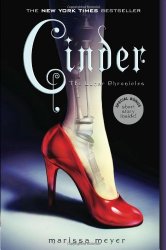


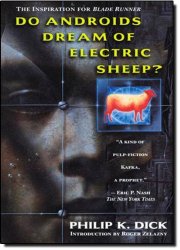







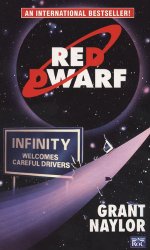
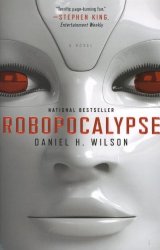
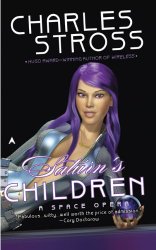



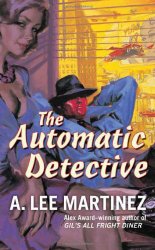

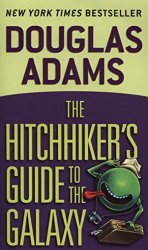
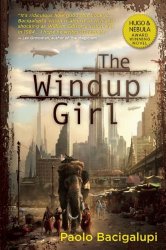

Wow, that is a fun and varied list. Several of these are ones I now want to read.
I’ve read I, Robot, The Alchemy of Stone and Do Androids Dream and agree that all should be on this list. If the list was longer I would include the Asimov/Silverberg novel The Positronic Man (built from Asimov’s short story, The Bicentennial Man) and more recently Cassandra Rose Clarke’s The Mad Scientist’s Daughter.
Learned something today too…I had NO IDEA that The Six Million Dollar Man was based on a novel.
Very pleased to see THE AUTOMATIC DETECTIVE on your list. I love that book.
G’day great list,
I appreciate this is from a while ago but I would also suggest Rupetta by Nike Solway.
Thanks for the blog & lists!
cyberiad?
sirens of titan, Salo was the man
Not quite sure why Neuromancer is on the list. Brilliantly important book but where are the robots? The AIs are not mobile and the rest of the characters are enhanced humans. The same objection applies to Cyborg.
Let us not forget Heinlein’s “Friday” about a very sexy android.
I would add Moderan. Read it my senior year in HS in the early 70s. very strange interaction between humans and giant robotic civilization.
Good addition! I hadn’t heard of this book, but after checking it out on amazon, it looks really interesting.
How can we leave out the biggest ‘bots of them all: Keith Laumer’s “Bolos” series? I’m aghast!
Trying to remember the name of two books by Asimov, I think. 1.) About a Robot/Detective who is sent to planet that is part humans and part robots to investigate the murder of a robot. 2) A love story about a species that procreates as a triad, it takes three to come together to produce offspring. Both are from the early to mid 1970s .
The first one is The Robots of Dawn 🙂
…and the second one is “The Gods themselves”
I’m searching for novel where a rogue research cyborg escapes during jungle testing? and hides underneath a remote village hut veranda floor. When a child crawls under to retrieve a toy / ball (?) the android awakens out of it’s camouflaged hibernation state, and saves the child’s life. However the whole village now comes under fire from alerted military intent on recapturing this errant aberrant human AI rebel.
Anyone a clue of the author, and what is the title?
Read, “Love in the Age of Mechanical Reproduction” by Judd Trichter, wonderful novel. Rossum’s Universal Robots, The Wind-up Girl and Do Androids Dream of Electric Sheep, are all good books, but the synthetic characters in them are not robots, they’re simply artificially created and enhanced humans, similar to full-grown clones.
Wow, great list! I’m searching for a book that involves the future and steampunk-type robot bees ‘awakening’ who are really listening and recording devices. Something about a large, rusted machine. Didn’t get very far before life took over but it was very much a science-fiction book.
I have to agree with trurl above: The fact that Lem’s Cyberiad is missing from list is a huge shame. (I did enjoy the list otherwise though.)
I’d swap Ilium for Hyperion for the Dan Simmons choice. Not sure how the Shrike wouldn’t make a list of robots…
How come you don’t mention Heinlein? I think he deserves a space in your list next to Asimov as one of the greatest authors regarding SciFi and Robots.